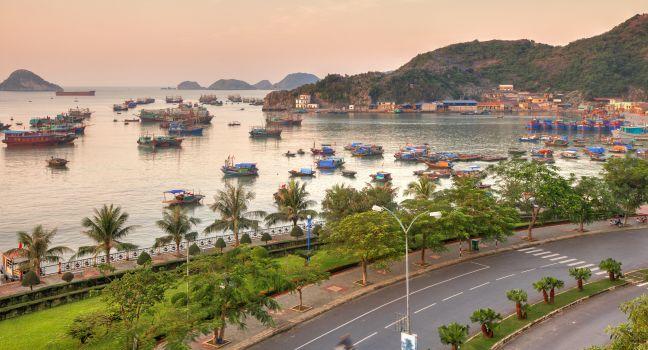A 250-km (155-mile) underground network of field hospitals, command posts, living quarters, eating quarters, and traps, the Cu Chi Tunnels illustrate the Vietcong's ingenuity in the face of overwhelming odds.
Work on the tunnels began in 1948 to combat the French and continued into the '70s. The extensive underground network made it possible for the Vietcong in the '60s not only to withstand blanket bombings and to communicate with other distant Vietcong enclaves but to command a sizable rural area that was in dangerous proximity (a mere 35 km [22 miles]) to Saigon. After the South Vietnam President Ngo Dinh Diem regime's ill-fated "strategic hamlet program" of 1963, disenchanted peasants who refused to move fled to Cu Chi to avoid the aerial bombardments. In fact, the stunning Tet Offensive of 1968 was masterminded and launched from the Cu Chi Tunnels nerve center, with weapons crafted by an enthusiastic assembly line of Vietcong-controlled Cu Chi villagers. Despite extensive ground operations and sophisticated chemical warfare—and even after declaring the area a free-fire zone—American troops were incapable of controlling the area. In the late 1960s B-52 bombing reduced the area to a wasteland, but the Vietnamese Communists and the National Liberation Front managed to hang on.
There are two Cu Chi Tunnel tourist areas, which both have tunnels that have been expanded to accommodate tourists of all sizes. These larger tunnels are still claustrophobically small, however, and could be much too snug for some. Most guided tours go to Ben Dinh, where the firing range (M16 bullets are $1.50 each, AK47 bullets are $2 each) is right next to the souvenir shop.
Ben Duoc is a much prettier site and is usually less crowded than Ben Dinh, with the added advantage of having its firing range farther away from the tunnel area. What makes Ben Duoc the more pleasant site is the on-site temple and restaurant: Ben Duoc Temple of Martyr Memorial is surrounded by lush green gardens, while the Dia Dao Restaurant is a nice location for lunch.
The ticket price includes an official guide, who will show you the tunnels, air vents, and living quarters. They will also explain the re-created booby traps, the mechanized mannequins making bombs and traps, and the real-life people making sandals from tires.
Both sites are owned by the government and visiting both is not recommended, as the displays are the same.




